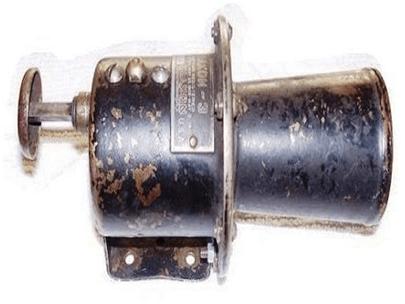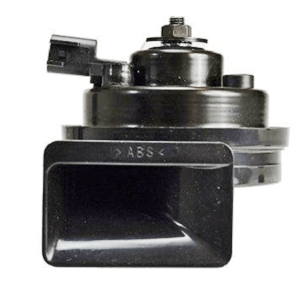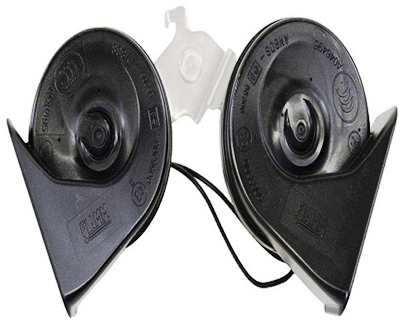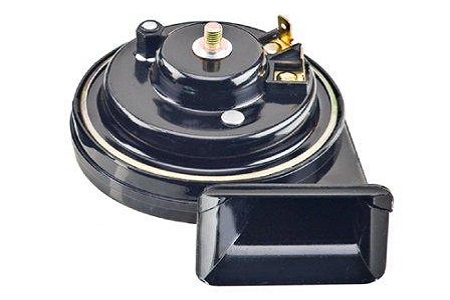Diagnosing and Repairing a Car Horn
The automotive horn is an important safety item. Here we’ll talk about diagnosing and repairing car horn problems. Automotive circuits have become extremely complicated, but the horn still remains a simple and straightforward circuit.
This provides an excellent opportunity for the do-it-yourself mechanic to dig in and perform some basic electrical diagnosis. Not only is the automobile horn important for emergency situations, but you cannot pass a state safety inspection unless this device is fully operational.
A Little Automotive Horn History

The automotive horn has been around since the late 1800s. In the early days, they experimented with ingenious methods to power the horn including a brief period where they used the exhaust from the combustion engine to power the warning device.
However, it wasn’t until 1908 when an apprentice of Thomas Edison patented the klaxon horn that focused the sound in front of the automobile that the warning device became standard equipment. In 1910 they came up with a way to operate the klaxon horn electrically by exciting a magnet that vibrated a steel diaphragm. They still use the electric klaxon horn design on modern vehicles.
How a Car Horn Works
As mentioned above the standard horn device works by energizing an electromagnet that operates a thin steel diaphragm built into a conch shell shaped amplification housing. Modern horns often include an adjustment to optimize the sound discharge.

They work by providing an adjustment screw that changes the distance between the electromagnet and the diaphragm to achieve the best results. We call making this adjustment tuning the horn. Car makers use different methods to send power to the sound device and these vary between year, makes and models. With that said, auto manufacturers are required to make the horn convenient to operate. This is why you find steering wheel mounted horn switches on all cars and trucks.
Closing the contacts by depressing the horn button allows battery voltage to flow to a horn relay. Since the steering wheel turns and the column doesn’t, it’s necessary to use a contact ring and brush to facilitate power flow regardless of the steering wheel position.
After power reaches the horn relay a magnetic coil is energized inside the relay. This closes the electrical contacts and allows the battery voltage to flow to the car horn mounted in the front grille assembly. Many car makers will have multiple sound devices. This gives them a high, low and mid range sound providing a more impressive warning blast.
The Car Horn Blows but Doesn’t Sound Right
Most drivers will complain that when they push on the horn contacts the horn doesn’t sound at all. However, there are isolated situations where the horn does sound, but it doesn’t make the expected noise. Sometimes the sound can seem muffled or the tone is off. This can also cause it to fail inspection.
One common reason for this set of symptoms is water infiltration inside the horn unit. As mentioned several times above, we still generate the sound by operating a steel diaphragm. When this diaphragm is exposed to water it can corrode and rust, reducing the effectiveness of the vibration caused by stimulating magnet.
Fortunately, this situation is usually repairable. You can remove the horn from its mounting location and see if any water comes out of it by tilting it in the proper direction. If you get water out, you can blow dry it with compressed air and then lubricate the inside with some WD-40 or equivalent spray lubrication. Then reinstall the device and test the operation.
Common Car Horn Electrical Problems

When an automobile horn doesn’t work at all we can get some insight on what the malfunction is by listening for the horn relay when operating the steering wheel mounted contacts. If you push on the horn button and you hear the relay clicking we know the electrical part of the circuit is functioning up to that point. In fact, if you hear the relay clicking you probably have a bad set of horns.
Although this is one of the most common malfunctions of the circuit we have one more test to perform before we condemn and replace these devices. Since this is a 12 V circuit, we can use a test light to see if power is reaching the connector. You simply pull the connector off and have someone push on the horn pads and see if the test light illuminates. If it lights up you probably have a bad horn assembly.
Nevertheless, you want to make sure they are well grounded as you need both power and a ground to make it blow. Most factory horns are case grounded and the ground is supplied through the mounting bolt. Check your BMW car service manual for the ground location as they use a separate wire. You can check this area for corrosion or looseness. Finally, if you want to double check your work you can use a jumper wire to apply 12 V directly to the horn. If it doesn’t sound go ahead and replace the unit.
Automotive Horn Relay Problems
When you operate the horn switch and you don’t hear a relay clicking the first thing to do is to check the fuse. This is usually a 20 amp fuse located in the main panel. If the fuse is good you need to find the horn relay. These are often located in a convenience center with other electrical relays.
In your convenience center you will often find relays with the same part number. After finding the horn relay you can swap it out with another of the same identical part number and see if the horn works. If it does you have just found out you have a bad horn relay. The final problem to discuss is if we have a bad horn switch. If you have a switch malfunction there will be no clicking at the relay.
There’s several ways to test for a bad switch. I’ll outline my two favorite here and you can decide which is easier for you. On some automobiles, you just have to remove a couple 7 mm screws to remove the horn pad from the steering wheel. I prefer this method, because if the switches are bad we have to replace them anyway.
With the horn pad removed you’ll find a simple two terminal switch. You can use the continuity test feature on an inexpensive automotive meter to verify the switch provides continuity when pushed. If you don’t want to take the horn pad off you can pull the horn relay and take a look in your auto repair manual to see which terminal supplies the signal from the steering wheel switch. Then you can have an assistant push on the switch and test for power or ground at the relay terminal as indicated by your car service manual.


